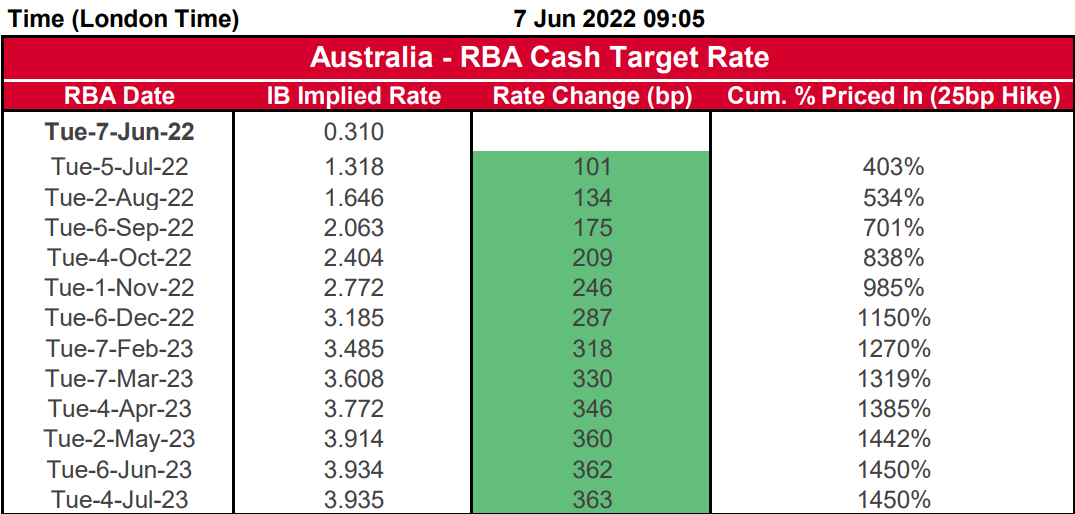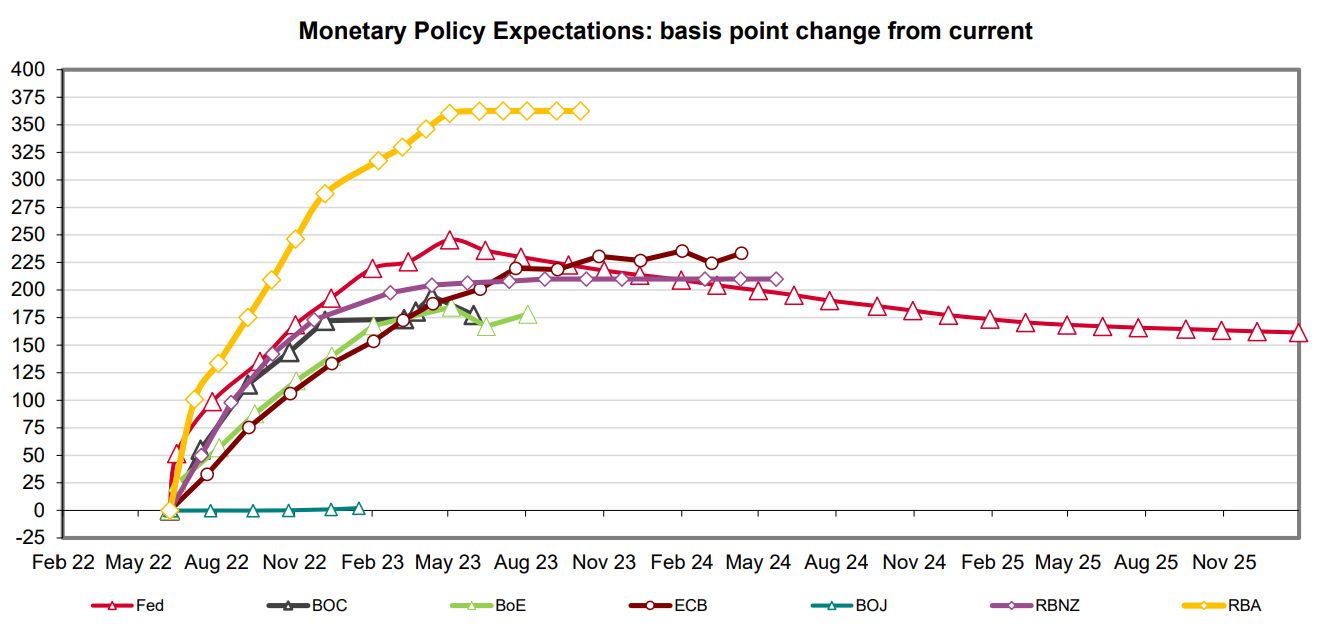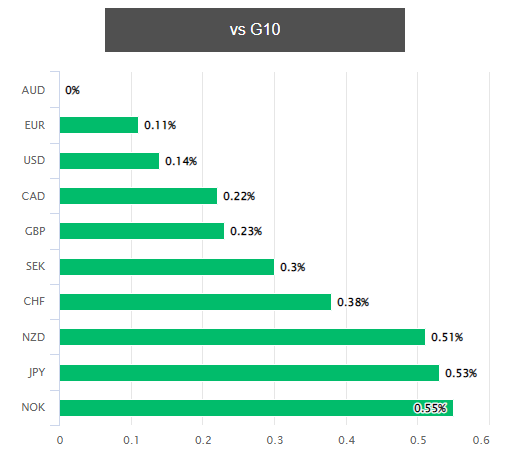Australian Dollar Outperforms as RBA Statement Draws Hawkish Interpretation
- Written by: James Skinner
-
- AUD chalking up widespread gains post-RBA
- RBA seen turning onto a more hawkish path
- Markets look for cash rate to top 3% in 2022
- RBA’s language implies risk of market upset

Image © ArchivesACT, Reproduced under CC Licensing, Editorial, Non-Commercial
The Australian Dollar outperformed many other major currencies after the Reserve Bank of Australia’s June interest rate decision was widely interpreted as signalling a hawkish turn in the RBA’s policy stance, leading financial markets to wager that Australia’s cash rate could top 3% later this year.
Australian Dollars were bought widely on Tuesday, leading to gains over most in the G10 and G20 buckets after the RBA took the market by surprise with a decision to lift its cash rate by a 50 basis point increment to 0.85%.
This reverses the rate cuts announced at the onset of the pandemic and was a surprise for a market that had been divided over whether the RBA would lift the benchmark by even a lesser 40 basis points.
“The decision to hike by a larger than usual 50bp indicates the Board has made the decision to front load the tightening cycle,” says Gareth Aird, head of Australian economics at Commonwealth Bank of Australia.
Above: Australian Dollar performance relative to G10 counterparts. Source: Pound Sterling Live.
Aird cites the RBA’s new expectation that inflation will “decline back towards the 2–3 per cent range next year” as an indication that the bank intends to be more aggressive in attempts to drive down inflation going forward, likely by announcing additional large increases in its cash rate.
To the extent that this is the correct interpretation it would suggest there is some chance of the RBA meeting market-implied measures of expectations, some of which rose further on Tuesday to suggest that Australia’s cash rate is now likely to exceed 3% before year-end.
“The decision to front end load the hikes (we only expected one hike of 40 basis points in June to be followed by 25’s) will prove to be much more effective in meeting the inflation challenge by signalling clearly to economic agents that the RBA is very serious about its role in returning inflation to within the band by 2024,” says Bill Evans, chief economist at Westpac.
“We expect the Board will decide on another 50 basis point increase in July. By front loading the moves it can firmly establish its inflation fighting commitment. The cash rate is then likely to move in 25 basis point increments with a pause as the Board moves above neutral to a peak in February of 235 basis points,” Evans and colleagues also said on Tuesday.
 Source: Westpac. Click image for closer inspection.
Source: Westpac. Click image for closer inspection.
The RBA’s statement was widely interpreted as signalling that further large increases in the cash rate could be seen in the months ahead, which likely played a role in lifting the Australian Dollar, although there are multiple reasons for why the market may have gotten ahead of itself on Tuesday.
Pricing in the derivatives markets shifted sharply to imply that investors and traders think Australia’s cash rate is now likely to end the year up at 3.18%, in turn suggesting that many now see good odds of the RBA announcing 0.50% increases in each of its remaining decisions for 2022.
But both Westpac and Commonwealth Bank of Australia still see the RBA stopping some way short of that level this year while some of the language contained in RBA Governor Philip Lowe’s Tuesday statement also suggested a risk of the market eventually being left disappointed.
“The Board expects to take further steps in the process of normalising monetary conditions in Australia over the months ahead. The size and timing of future interest rate increases will be guided by the incoming data and the Board's assessment of the outlook for inflation and the labour market,” RBA Governor Lowe said in the statement following Tuesday’s decision.
 Source: Westpac. Click image for closer inspection.
Source: Westpac. Click image for closer inspection.
This came after the RBA said it would be paying close attention to how household spending evolves in the months ahead and under circumstances where house prices are falling and real incomes are being squeezed by a stratospheric elevation of oil, gas and electricity prices.
“While the central scenario is for strong household consumption growth this year, the Board will be paying close attention to these various influences on consumption as it assesses the appropriate setting of monetary policy,” Governor Lowe said on Tuesday.
This gives rise to the risk of a scenario in which household demand falters, leading the Australian economy to slow in the months ahead, which is something that would potentially impact the RBA’s expectations for inflation at the other end of its forecast horizon.
That would in turn likely influence its judgement about the degree to which interest rates need to be lifted in order to bring Australia’s rate of inflation, which reached 5.1% in April, back down and within the two-to-three percent target band with possible implications for the Australian Dollar outlook.






